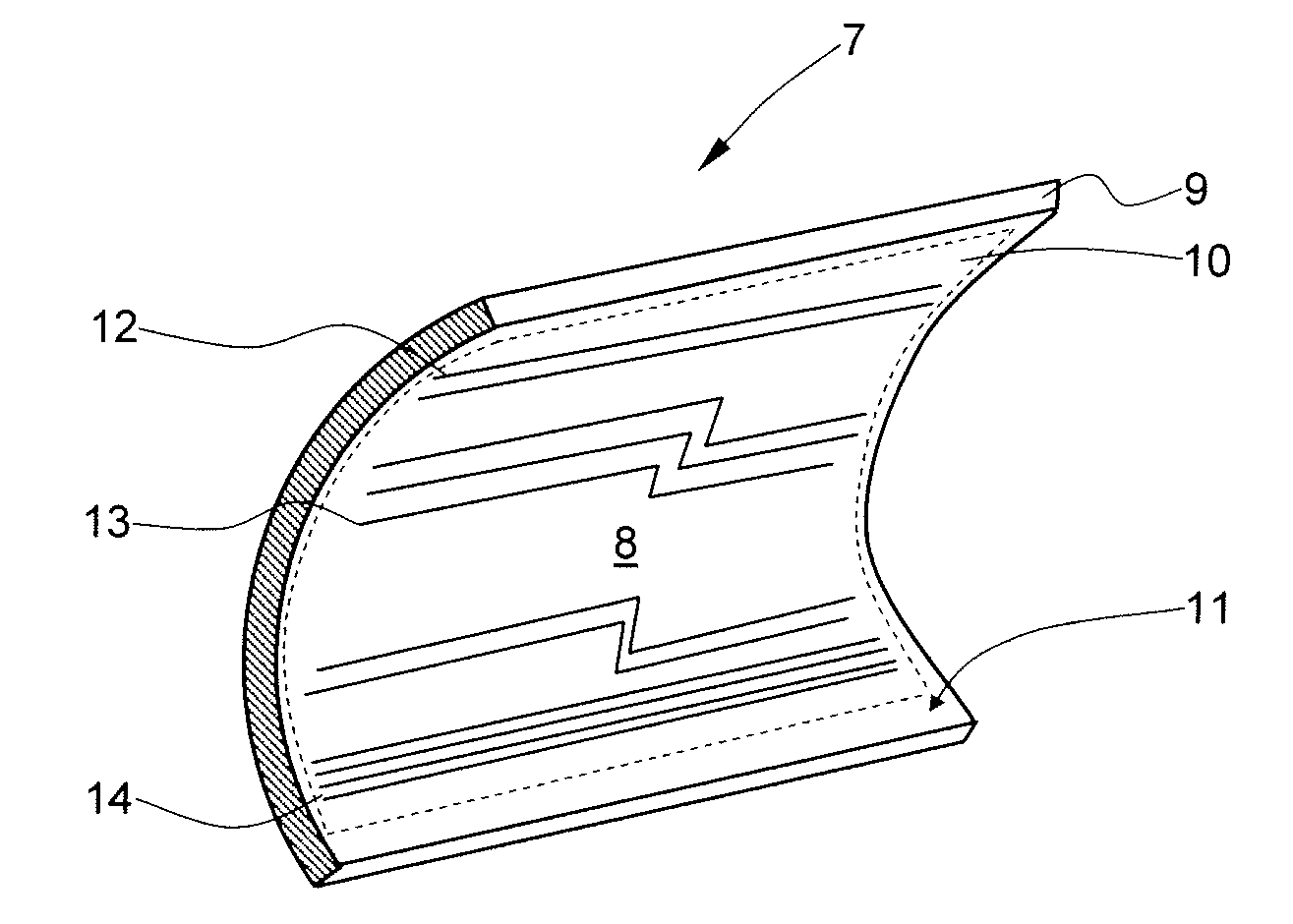Line system for an aircraft
a line system and aircraft technology, applied in the field of aircraft line systems, can solve the problems of high cost and personnel expenditure, difficult insertion of lines into existing cable bundles, and difficulty in implementing cabling modifications
- Summary
- Abstract
- Description
- Claims
- Application Information
AI Technical Summary
Benefits of technology
Problems solved by technology
Method used
Image
Examples
Embodiment Construction
[0043]FIG. 1 shows a section through an assembly having a line system integrated directly in the structure.
[0044]The assembly 1 is a side shell 2 for forming a fuselage section (so-called “barrel”) (not shown) in the exemplary embodiment shown. The fuselage section may be assembled with a further side shell, a top shell, a bottom shell, and at least one floor frame to form a complete fuselage section, for example. A complete fuselage cell for an airplane is formed from multiple fuselage sections arrayed one behind another and permanently connected to one another.
[0045]The side shell 2 is formed using a fiber-reinforced plastic material 3, for example, a carbon-fiber-reinforced epoxy resin. Multiple electrical lines are laid directly in the fiber-reinforced composite material 3, of which only the electrical lines 4 through 6 are provided with a reference numeral for the sake of better overview of the drawing. The electrical lines 4 through 6 may be embedded in the resin matrix of the...
PUM
 Login to View More
Login to View More Abstract
Description
Claims
Application Information
 Login to View More
Login to View More - R&D
- Intellectual Property
- Life Sciences
- Materials
- Tech Scout
- Unparalleled Data Quality
- Higher Quality Content
- 60% Fewer Hallucinations
Browse by: Latest US Patents, China's latest patents, Technical Efficacy Thesaurus, Application Domain, Technology Topic, Popular Technical Reports.
© 2025 PatSnap. All rights reserved.Legal|Privacy policy|Modern Slavery Act Transparency Statement|Sitemap|About US| Contact US: help@patsnap.com



